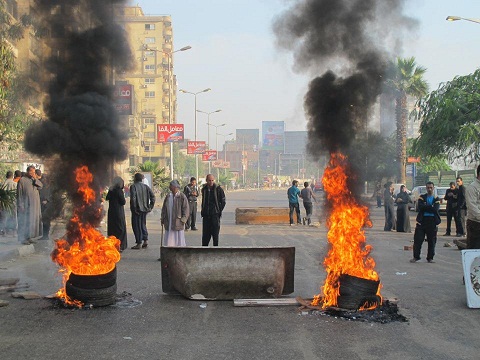
By Ahmed S. Nada, First Solar
Governments, utility companies and private enterprises around the world have rapidly been embracing the potential to tap into our most abundant energy resource – the sun – and for good reason: the amount of sunlight that reaches the Earth’s surface every six minutes is sufficient to produce more electricity than the world’s population consumes over an entire year. Solar energy is not only clean and renewable, but is also cost competitive with fossil fuels.
There is no doubt that investing in solar electricity generates important environmental, economic and social benefits. Therefore, it comes as no surprise that Egypt has committed to generating as much as 20% of its energy from renewable sources, including solar by 2020.
In addition to the competitive economics, solar power plants, when properly designed and integrated into the electricity grid, deliver yet another benefit – a significant contribution to grid stability. Grid stability cannot be taken for granted: electricity is the lifeblood of modern society, and a stable electrical grid has a catalytic impact on the economies and communities it powers.
The typical electrical grid was designed and built decades ago, on the principle of a centralised energy system of massive power plants transmitting electricity across long distances to the load packets. The adoption of renewable energy has translated into a need for these grids to cope instead with multiple variable generators, often distributed over large geographical areas, far from the load centres. This presents an important challenge for the electrical system operators and renewable generation owners, particularly since renewables have the potential to match, or even surpass, conventional generation in some regions over the next decade.
A large part of the challenge arises from the variability of renewable energy generators: solar power plants need sunlight to function and passing clouds could impact their ability to consistently generate electricity and maintain the stability of the grid. Conversely, an unusually sunny day in a region with a large volume of distributed generators, during a low demand period, could lead to excess electricity generation, which in turn would impact stability. However, with new sophisticated tools and operational practices, grid operators are able to support the integration and reliable operation of variable generation on the electric power system.
The North American Electric Reliability Corporation (NERC) task force had defined six requirements for generation that supports grid stability: voltage, volt-ampere reactive (VAR) control and/or power factor regulation; fault ride through; real power control, ramping, and curtailment; primary frequency regulation; frequency droop response; and short circuit duty control. These requirements are designed to control the output of a plant while giving operators the ability to monitor, track and react to changes in grid frequency, while also providing a failsafe to prevent faults.
Conventional energy generation systems need to comply with these standards – which are considered a global benchmark – before being integrated into grids. Today, First Solar’s utility-scale photovoltaic (PV) power plants are designed to address these requirements, marking a significant leap forward in the integration of renewable energy generators into electrical grids.
With more than 9GW installed worldwide, we understand the challenges of integrating utility-scale solar power into grids and have developed a “grid-friendly” plant concept. By using technology – such as a proprietary plant control system that actively stabilises the electricity grid and provides advanced features typical of large, conventional power plants – our grid-friendly plants are able to actively contribute to grid stability. The use of forecasting and advanced monitoring techniques, also boost systems availability and the predictability of solar energy.
As utility-scale PV has and continues to be successfully integrated into grids worldwide, the use of planning, real time controls and fast communication technology will continue to further increase its ability to actively contribute towards grid stability and reliability. This in turn will encourage the adoption of solar energy, ensuring that affordable solar electricity will play a bigger role in growth and development around the world.
Ahmed S. Nada is the Vice President for the Middle East at First Solar. First Solar is a leading provider of solar energy solutions and has over 9 gigawatts (GWs) of modules installed worldwide.


